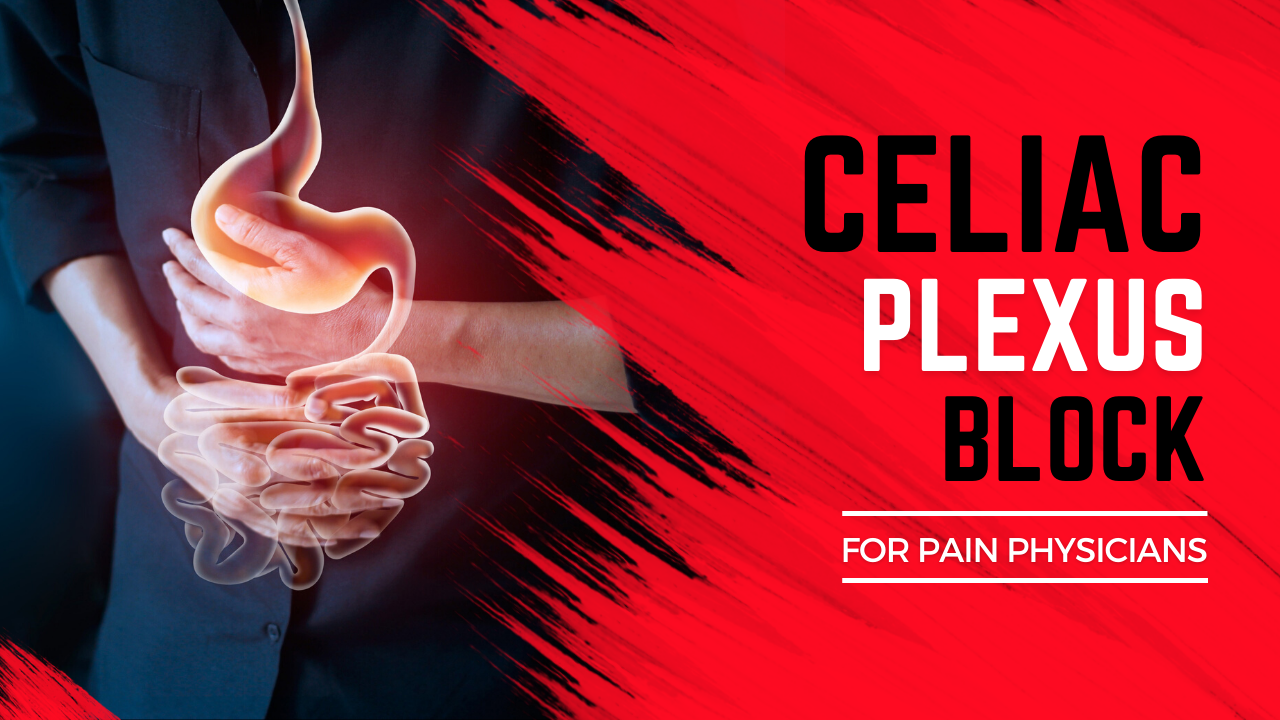Celiac Plexus Block: C-Arm Guided Transaortic Approach

Overview of Celiac Plexus Block
A Celiac Plexus Block (CPB) is a targeted injection used primarily for managing abdominal pain associated with chronic pancreatitis, abdominal cancer, or other gastrointestinal disorders. The procedure involves using a C-arm for precise imaging guidance and delivering an anesthetic or neurolytic agent to the celiac plexus—a network of nerves located near the aorta that transmits pain signals from the abdominal organs.
This technique is widely used for pain relief in cancer patients or those with severe chronic pain unresponsive to medication. Among the different approaches, the posterior transaortic approach has gained attention due to its precision and effectiveness.
C-Arm Guidance in Celiac Plexus Block
The C-arm fluoroscopy plays a crucial role in the success of a celiac plexus block, providing real-time imaging to ensure correct needle placement and avoid complications. The C-arm allows for multiple views (anteroposterior, lateral, oblique) to confirm needle trajectory and the precise spread of the injected substance.
Indications
Celiac plexus blocks are indicated for patients suffering from:
- Chronic Pancreatitis
- Abdominal Cancer Pain (pancreatic, gastric, liver, etc.)
- Intractable abdominal pain unresponsive to conservative treatments
Techniques for Celiac Plexus Block
There are three common approaches to performing a C-arm guided celiac plexus block:
- Posterior Transaortic Approach
- Anterior Approach (by USG)
- Retrocrural Approach
- Classical approach
Each technique has specific indications based on patient anatomy, underlying pathology, and physician preference. However, the posterior transaortic approach is preferred in many cases due to its higher accuracy in targeting the plexus while minimizing risks.
Posterior Transaortic Approach: Detailed Steps
1. Patient Positioning:
The patient is positioned prone on the procedure table. A cushion may be placed under the abdomen to reduce lumbar lordosis, providing a better view of the abdominal aorta and the surrounding structures under fluoroscopy. Put two pillows under the chest and waist if the patient has ascites.
2. C-Arm Setup and Visualization:
Set the C-arm fluoroscope for anteroposterior (AP) and lateral views. Start by obtaining a clear image of the L1 vertebral body as a key anatomical landmark. The aorta, located anterior to the vertebral body, is the target region.
We published modified classical technique of trans-aortic approach in 2009 and that is being followed in most centers. Steps are as follows:
Take C-arm in AP –> Make lower end plate of T12 parallel –> Make C-arm oblique towards left side till L1 transverse process in the left side is not seen–> Imagine a triangle bounded laterally by 12th rib, medially by the vertebral body, and base by an imaginary line along the base of L1 cerebral body. –> Needle entry point will be at the middle of the triangle in tunnel vision.
3. Needle Insertion Point: For the transaortic approach, a 22-gauge 15 cm long spinal needle is typically inserted. The needle is passed until it hits the rubbery structure of the posterior wall of the aorta. Then, it goes through the aorta, punctures the anterior wall, and injects dye. The dye moves with aortic pulsation.
4. Needle Trajectory:
Under AP fluoroscopic guidance, advance the needle until it just crosses the aorta and the dye is not vanishing. Watch the video for details.
5. Verification of Needle Placement:
Once the needle is anterior to the aorta, inject contrast dye to confirm the spread near the celiac plexus. The contrast should outline the plexus, indicating correct placement.
6. Administration of the Neurolytic Agent:
Following confirmation, inject 60% alcohol or 6% phenol for neurolysis or a local anesthetic for temporary pain relief. Monitor the spread of the injectate to ensure proper coverage of the celiac plexus.
7. Post-Procedure Monitoring:
After the injection, remove the needle under fluoroscopic guidance and observe the patient for any immediate complications. Monitor for hypotension, diarrhea, or other signs of autonomic dysfunction, which can occur post-block.
Advantages of the Posterior Transaortic Approach
The posterior transaortic approach offers several advantages over other techniques, including:
- Direct access to the celiac plexus: Passing through the aorta ensures that the needle reaches the plexus with fewer repositioning attempts. Volume of alcohol is less, 15-20 ml compared to classical approach.
- Minimized risk of organ puncture: Compared to the anterior approach, this method avoids traversing the stomach, pancreas, or intestines.
- Improved accuracy: Fluoroscopic imaging via the C-arm provides precise guidance, reducing the risk of vascular complications or non-target injections.
Risks and Complications
While the posterior transaortic approach is highly effective, potential risks include:
- Vascular injury: Though rare, the needle passes through the aorta, which can cause bleeding or vascular injury.
- Hypotension: Due to the disruption of sympathetic fibers.
- Diarrhea: A common side effect due to increased parasympathetic activity after the block.
Conclusion
The C-arm guided celiac plexus block using the posterior transaortic approach is a powerful tool for pain physicians, offering precision in pain management for chronic abdominal conditions. Its safety and effectiveness, when performed under expert guidance, make it the preferred choice in many cases. For best outcomes, thorough anatomical knowledge and the use of fluoroscopic guidance are essential in minimizing complications and maximizing patient comfort.
FAQs
Q: What is the recovery time after a celiac plexus block?
A: Patients typically recover within a few hours, though temporary side effects like low blood pressure or diarrhea may occur.
Q: Is the procedure painful?
A: A local anesthetic is used to minimize discomfort during the procedure. The pain relief can last for weeks to months.
Q: How often can I have a celiac plexus block?
A: The frequency depends on the cause of pain. Neurolytic blocks are usually done sparingly, while anesthetic blocks can be repeated as needed.
Call to Action
If you are a pain physician looking to perform this advanced technique, contact us for more detailed training modules and equipment recommendations.

